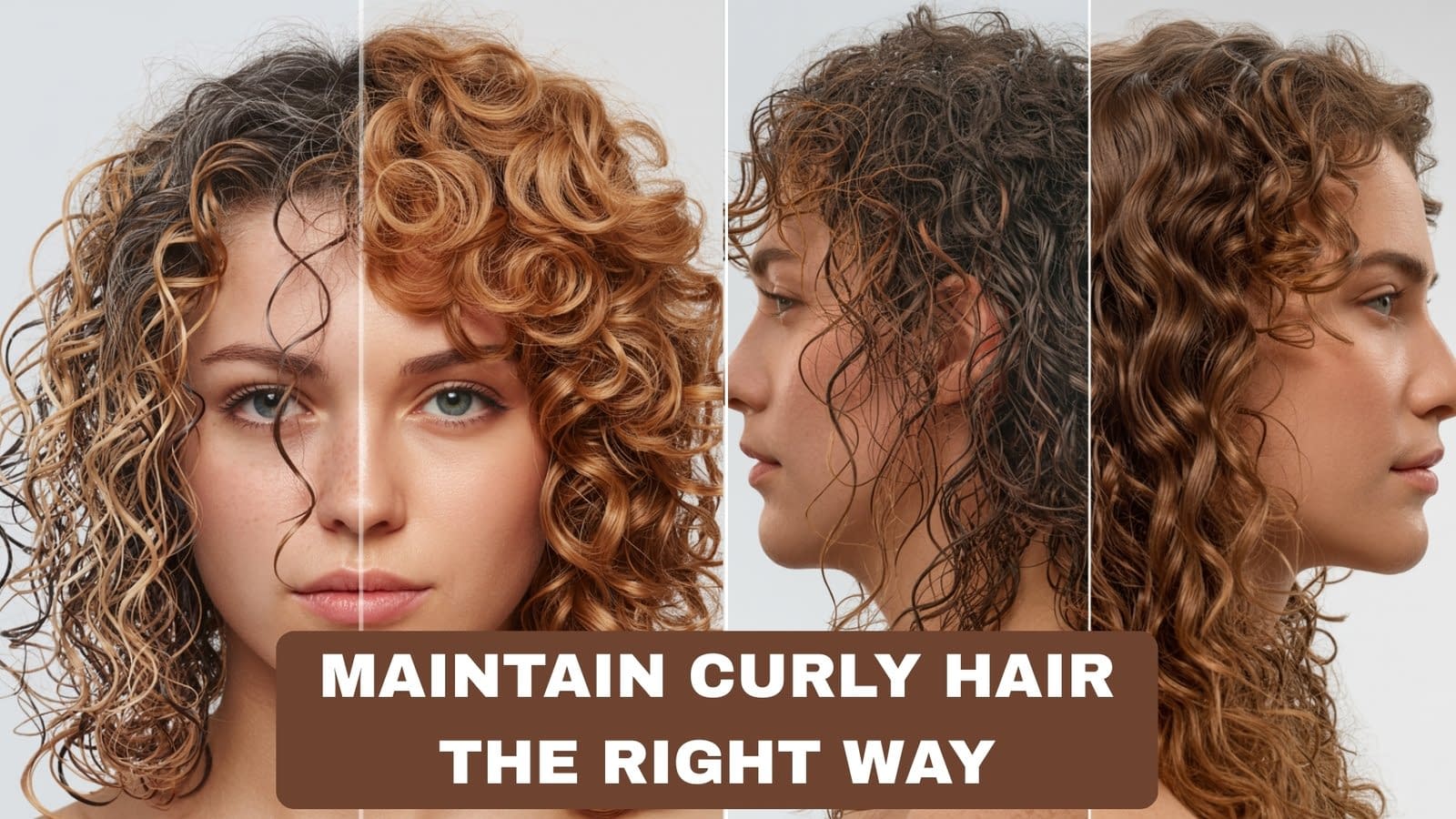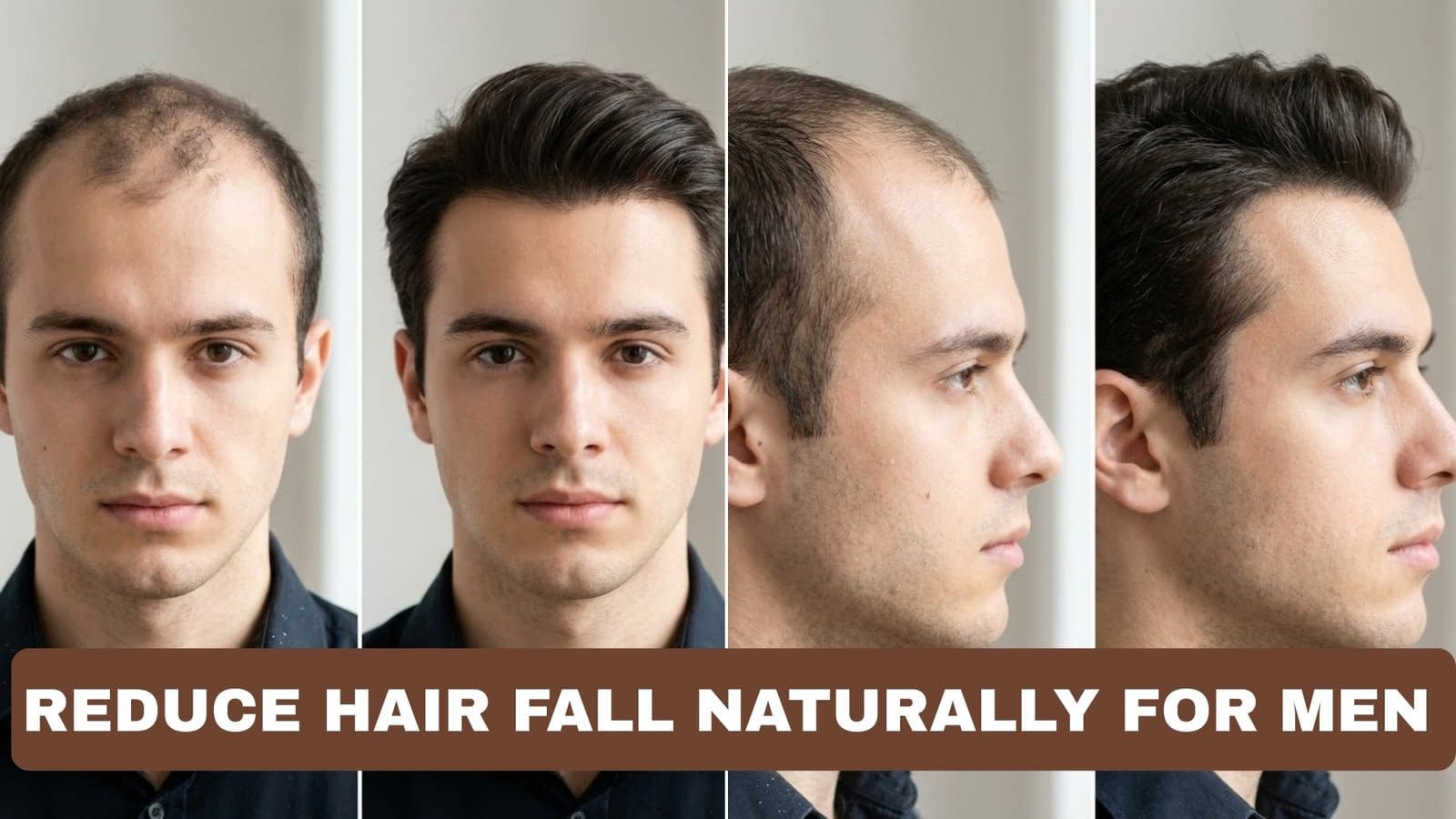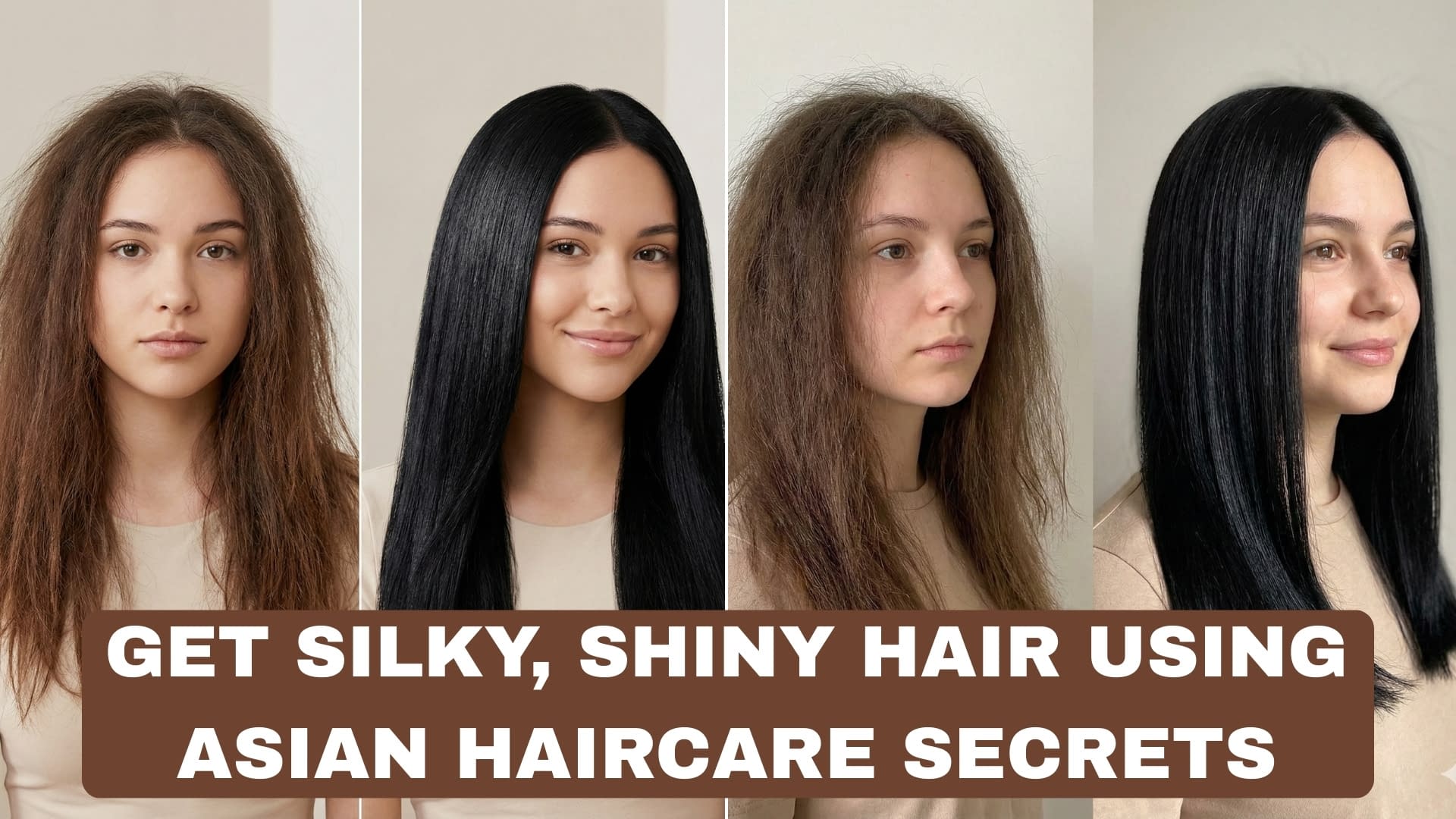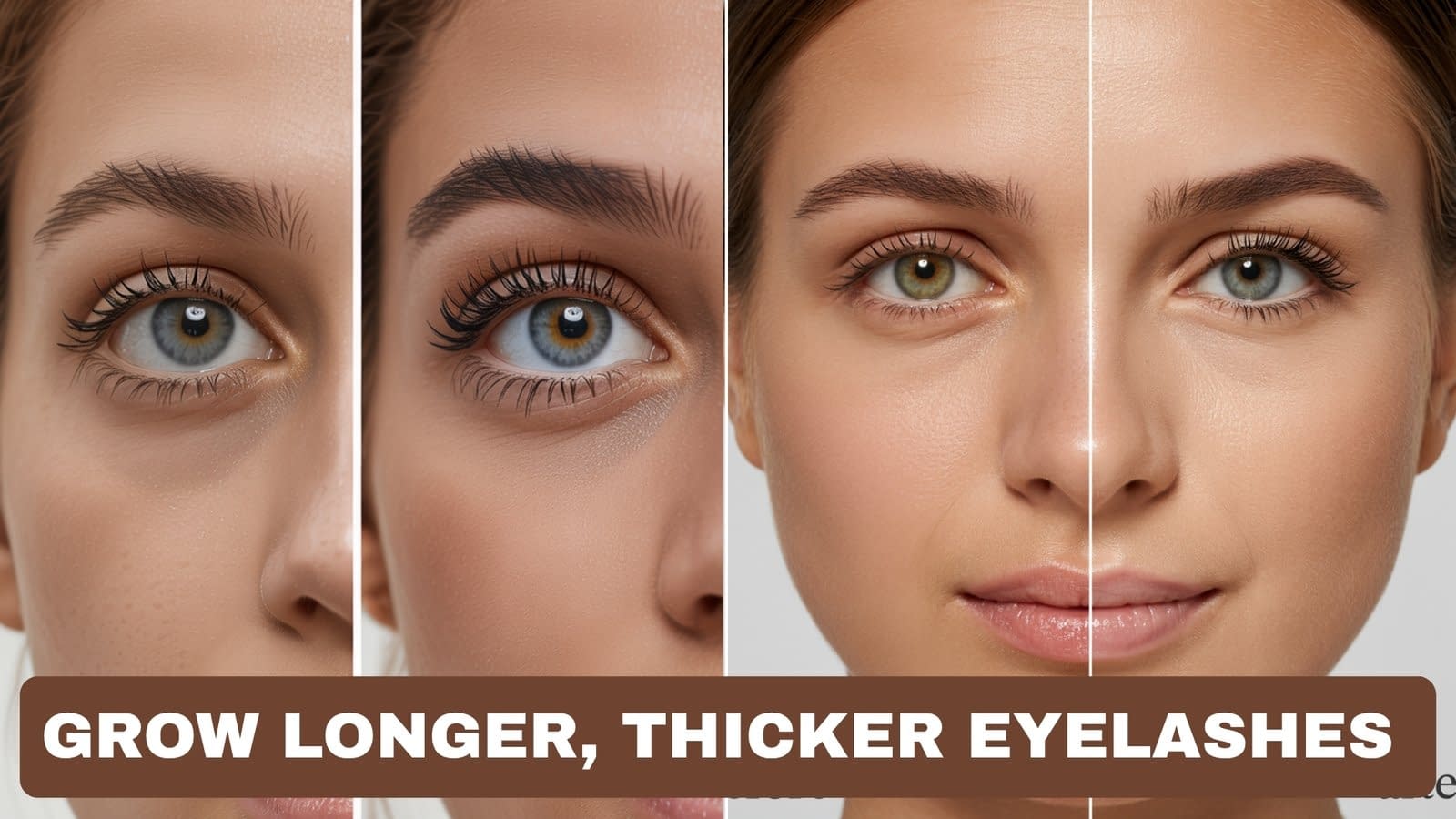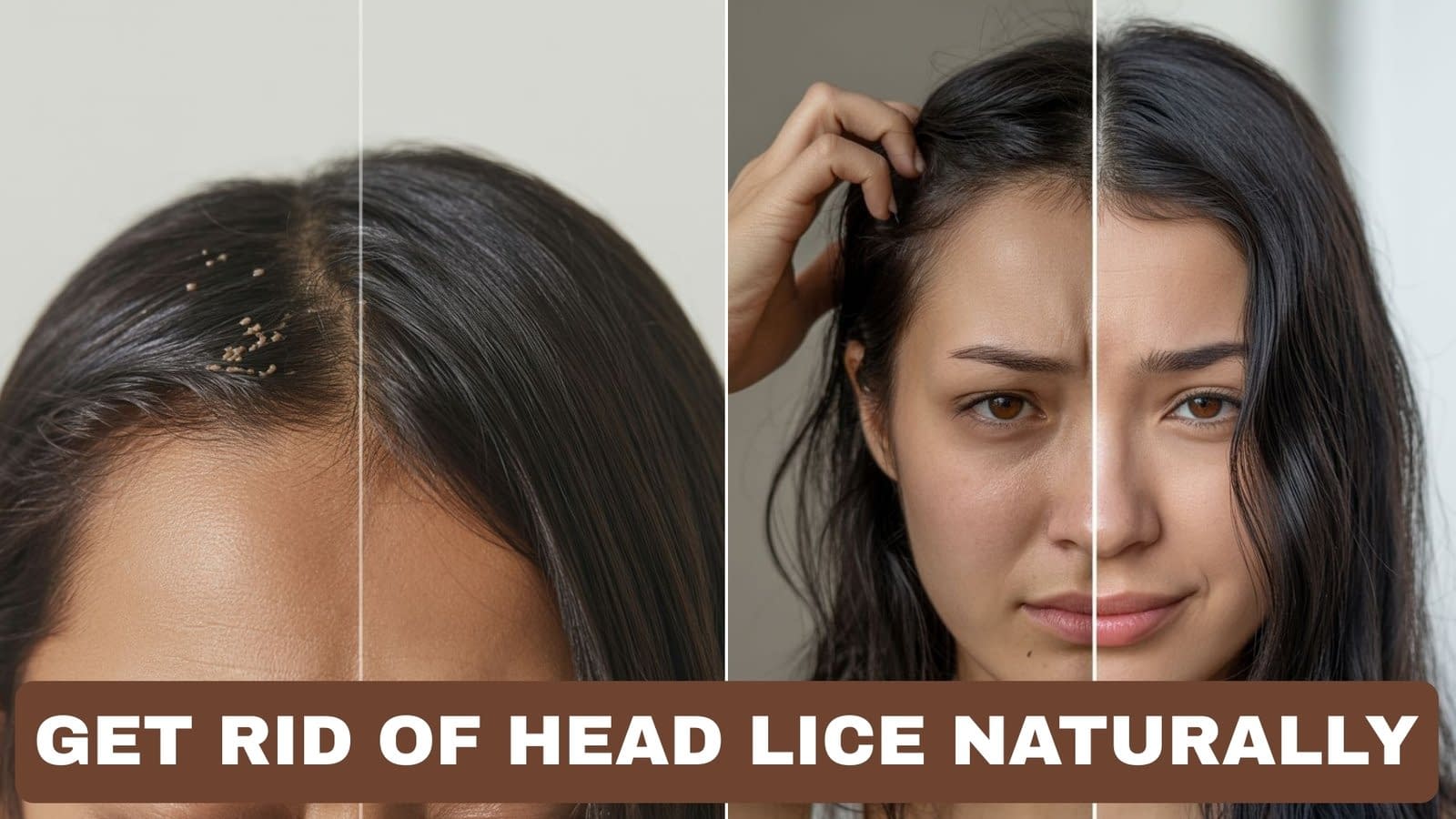Dandruff is annoying, embarrassing, and — happily — usually treatable. Whether you see white flakes on your shoulders, notice itching at your hairline, or your scalp feels oily and irritated, this guide gives you clear, practical steps to reduce dandruff fast and keep it from coming back. Below you’ll find easy-to-follow explanations, quick fixes, shampoo choices, safe home remedies, DIY mask recipes, an Ayurvedic toolbox, an everyday scalp-care routine, diet tips, common mistakes to stop doing, and guidance on when to see a dermatologist.
Read it as a toolkit: try a few evidence-backed approaches at once (a medicated shampoo + a gentle scalp-care routine + a few dietary tweaks) and give them 2–6 weeks to show noticeable improvement.
What Is Dandruff and Why Does It Happen?
Dandruff = visible flaking of the scalp caused by accelerated shedding of dead skin cells combined with oil, microbes, or inflammation.
Short breakdown:
- Your scalp constantly renews skin cells. Normally old cells are shed invisibly. Dandruff occurs when that process speeds up or the shed cells clump into visible flakes.
- It is not usually contagious or dangerous, but it can be persistent if underlying causes aren’t addressed.
Key contributors:
- Excess oil production on the scalp (sebum)
- Overgrowth of a naturally occurring yeast/fungus (Malassezia) that feeds on scalp oils
- Dry scalp (flaking without oil)
- Skin conditions like seborrheic dermatitis or psoriasis (overlap exists)
- Sensitivity to hair products or contact dermatitis
Bottom line: dandruff is a symptom, not a single disease — so the right remedy depends on why you have flakes.
Common Signs You’re Dealing with Dandruff
Look for these telltale signs:
- White or yellow flakes on hair, shoulders, or in hair parting.
- Itchy scalp that worsens after sweating or using certain hair products.
- Scalp oiliness or, conversely, dry flaky patches (both can be labelled “dandruff”).
- Redness or mild inflammation in more severe cases (may indicate seborrheic dermatitis).
- Worsening in winter (dry indoor air) or with stress/illness.
If flakes are large, thick, or accompanied by intense pain and heavy hair loss, treat it as a more serious scalp disorder and consult a dermatologist (see section 13).
What Causes Dandruff? Top Reasons You Should Know
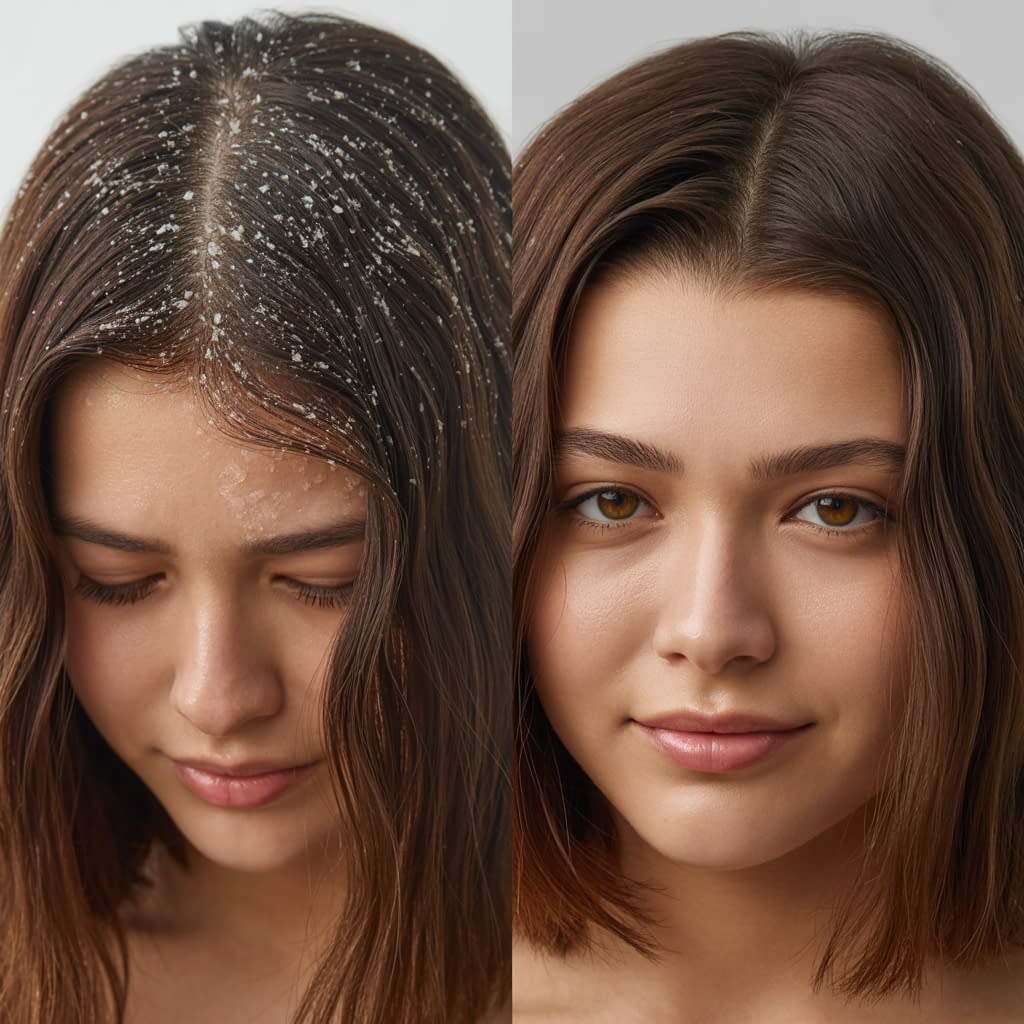
Seborrheic dermatitis
- An inflammatory condition affecting oil-rich areas (scalp, eyebrows, sides of nose). Presents with greasy, yellowish scales and redness. Often linked to Malassezia overgrowth and abnormal immune response.
Dry scalp
- Cold weather, low humidity, hot showers, or harsh shampoos strip moisture, causing fine, dry flakes. This looks different than oily dandruff: flakes are usually smaller and the scalp feels tight.
Fungal growth (Malassezia)
- Malassezia is a yeast that naturally lives on the scalp. When it overgrows (often in oily scalps), it can irritate skin and accelerate flaking. Many anti-dandruff treatments target this fungus.
Stress & poor scalp hygiene
- Stress can change oil production and immune response, worsening flakes. Infrequent washing allows oil and dead cells to accumulate; conversely, overwashing or using harsh/stripping products can also trigger flaking.
Other contributors: hormonal changes, certain medications, poor diet, sensitivity to hair care ingredients (fragrances, preservatives), and some medical conditions like eczema or psoriasis.
Is It Really Dandruff or Scalp Psoriasis? (Know the Difference)
They can look similar, but there are differences:
Dandruff / seborrheic dermatitis
- Flakes are yellowish or white and greasy.
- Scalp may be red and itchy; hair loss is usually mild and temporary.
- Often responds to anti-dandruff shampoos (zinc pyrithione, ketoconazole).
Scalp psoriasis
- Thick, silvery plaques with well-defined edges that can extend beyond the hairline.
- Often more persistent and can be painful or crack/bleed.
- Frequently accompanied by psoriasis on elbows, knees, nails.
- Requires dermatologist care and prescription treatments (steroids, vitamin D analogs, biologics for severe cases).
If flakes are thick, painful, or you have other psoriasis signs, see a dermatologist for a correct diagnosis — treatments differ.
How to Reduce Dandruff Fast: Quick Fixes That Work
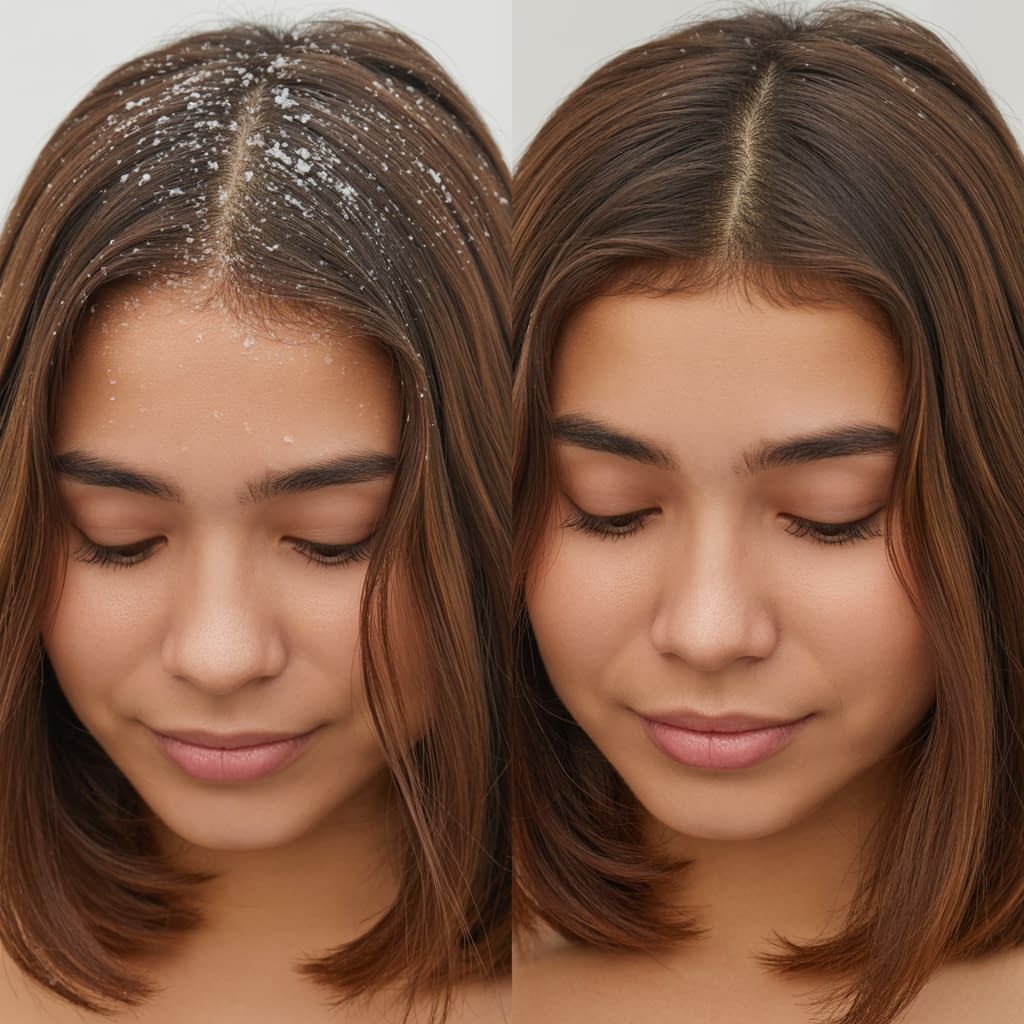
Use a combination of short-term relief and long-term control:
Immediate relief (24–72 hours)
- Switch to an anti-dandruff shampoo (see section 6). Use it as directed (usually 2–3 times a week to start).
- Leave the medicated shampoo on your scalp for 3–5 minutes before rinsing so actives can work (read product directions).
- Avoid hot water and scratching — scratching spreads flakes and irritates. Rinse in lukewarm water.
- Try a tea-tree or diluted apple cider vinegar rinse (see natural remedies) if you prefer gentler options — use with caution and test first.
Short plan to follow for two weeks
- Week 1: Use an anti-dandruff shampoo 2–3× per week, rotate with a gentle non-medicated cleanser on other days.
- Week 2: Evaluate. If flakes improve, continue and taper frequency once stable. If no change or worse, see section 13.
Consistency is key — many treatments take 2–6 weeks to show clear results.
Best Anti-Dandruff Shampoos You Should Try
Look for shampoos that contain one of these active ingredients (each targets dandruff differently):
- Zinc pyrithione — antibacterial and antifungal; good for mild-to-moderate dandruff and everyday use.
- Ketoconazole (1%–2%) — powerful antifungal often effective for stubborn dandruff and seborrheic dermatitis.
- Selenium sulfide — slows skin turnover and reduces Malassezia; can be used weekly but may discolor light hair with extended use.
- Coal tar — slows skin cell production; sometimes used for seborrheic dermatitis and psoriasis but can darken hair and make scalp more sensitive to sunlight.
- Salicylic acid (BHA) — exfoliates scale buildup; often paired with moisturizing ingredients to prevent dryness.
- Pyrithione + conditioners / botanical blends — many modern formulas combine actives with hydrating agents.
How to use:
- Wet hair with lukewarm water.
- Apply a generous amount of anti-dandruff shampoo and lather.
- Massage gently into scalp for 2–5 minutes (longer is better for actives to work).
- Rinse thoroughly.
- Follow with conditioner on hair ends (avoid heavy conditioner on scalp unless it’s scalp-safe).
Practical tips:
- If one active doesn’t work after 4–6 weeks, switch to another (e.g., try ketoconazole if zinc pyrithione fails).
- Many people rotate shampoos (e.g., medicated shampoo twice a week + gentle shampoo the other days) to maintain control and reduce irritation.
Natural Home Remedies for Dandruff (Safe & Effective)
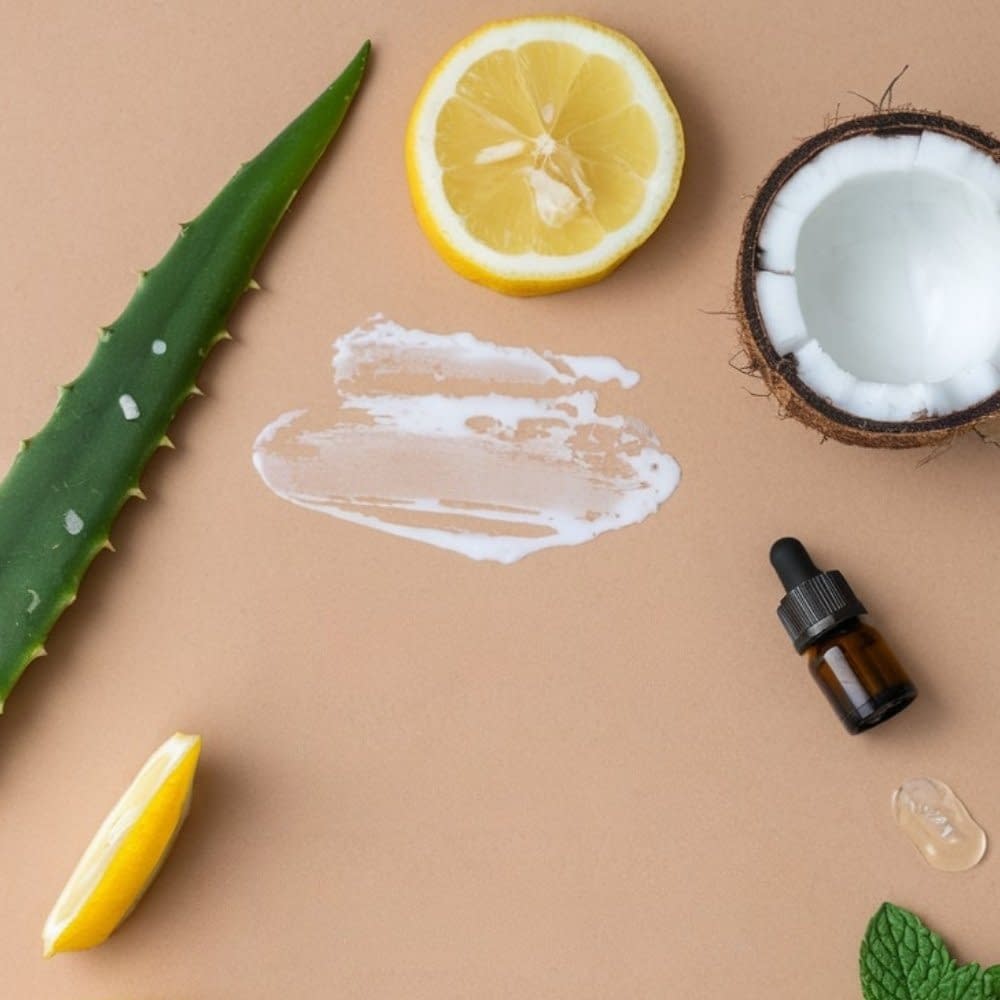
These remedies can help mild dandruff and soothe irritation. Always patch-test and dilute as needed.
Tea tree oil
- Why it helps: Natural antifungal and anti-inflammatory properties.
- How to use: Add 3–5 drops of tea tree oil to 1 tablespoon (15 ml) of carrier oil (coconut, jojoba) or to your palm with shampoo. Alternatively, buy shampoos containing 2% tea tree oil.
- Safety: Don’t apply undiluted tea tree oil to skin. Some people are sensitive — stop if irritation occurs.
Aloe vera
- Why it helps: Soothing, anti-inflammatory, moisturizing.
- How to use: Apply pure aloe gel to scalp, leave 20–30 minutes, then shampoo. Great for itchy, irritated scalps.
Apple cider vinegar (ACV)
- Why it helps: Acidic pH may help exfoliate and inhibit yeast growth.
- How to use: Dilute 1 part ACV with 3–4 parts water. Apply to scalp, leave 5–15 minutes, then rinse and shampoo. Do not use on cracked, inflamed, or recently treated (e.g., retinoid) skin.
- Safety: Always dilute. Avoid near eyes; stop if burning occurs.
Coconut oil
- Why it helps: Moisturizing and has mild antifungal fatty acids (lauric acid).
- How to use: Warm 1–2 tablespoons, massage into scalp, leave 30–60 minutes (or overnight under a towel), then shampoo thoroughly. Good for dry, flaky scalps — less useful for oily/scalp seborrheic cases.
Lemon juice
- Why it helps: Slightly acidic and exfoliating; can reduce oiliness.
- How to use: Mix 1 tablespoon lemon juice with 2 tablespoons water; apply briefly (5–10 minutes) then rinse and shampoo.
- Safety: Dilute; avoid prolonged sun exposure after lemon application due to photosensitivity risk. Do not use on cracked or irritated scalp.
DIY Anti-Dandruff Hair Masks for a Clean Scalp
Easy, inexpensive recipes with step-by-step instructions. Use these 1× per week, not daily.
1. Soothing Aloe + Tea Tree Mask (for itchy scalps)
Ingredients:
- 3 tbsp pure aloe vera gel
- 5 drops tea tree oil
- 1 tsp jojoba or coconut oil (optional if dry)
Steps:
- Mix ingredients in a bowl.
- Part hair and apply directly to scalp with fingertips.
- Massage gently for 2–3 minutes.
- Leave for 20–30 minutes (or overnight if comfortable).
- Shampoo twice to remove oil/gel and rinse thoroughly.
2. Apple Cider Vinegar Rinse (clarifying)
Ingredients:
- 1/4 cup (60 ml) ACV
- 1 cup (240 ml) water
- Optional: 1 tsp honey for soothing
Steps:
- Combine and pour over wet hair, focusing on the scalp.
- Massage in for 1–2 minutes.
- Leave 5–15 minutes, then rinse and shampoo. (If used overnight, dilute more.)
3. Coconut Oil + Baking Soda (for flaky, dry scalp — use sparingly)
Ingredients:
- 2 tbsp coconut oil
- 1 tbsp baking soda
Steps:
- Warm coconut oil until liquid. Mix with baking soda to form a paste.
- Apply to scalp, gently massage for 1–2 minutes (don’t scrub hard).
- Leave 15–20 minutes, then shampoo thoroughly.
- Note: Baking soda is alkaline and can be harsh if overused; limit to once every 2 weeks and monitor dryness.
4. Fenugreek (methi) Paste — Ayurvedic favorite (see section 9)
Ingredients:
- 2 tbsp fenugreek seeds, soaked overnight and ground into a paste
- 1 tbsp plain yogurt (optional)
Steps:
- Mix into a smooth paste.
- Apply to scalp, leave 30–60 minutes, then rinse and shampoo. Fenugreek can reduce itch and dandruff in many traditional uses.
Important: If you have active inflammation, open sores, or are using medicated scalp treatments, consult your doctor before applying home remedies.
Ayurvedic Remedies to Control Dandruff Naturally
Ayurveda focuses on balancing scalp “doshas” with herbal pastes, oils, and routines. These practices are widely used and generally safe when done sensibly.
Common Ayurvedic options:
- Bhringraj oil — traditionally used to nourish the scalp and support hair health. Massage warmed bhringraj-infused oil into scalp; leave 30–60 minutes then shampoo.
- Neem — anti-microbial and soothing. Use neem oil diluted in carrier oil, or make a neem leaf rinse by boiling leaves and straining the decoction to cool and rinse hair.
- Fenugreek (methi) — see mask above; rich in proteins and nicotinic acid beneficial for scalp health.
- Amla (Indian gooseberry) — used as oil or powder to balance oils and strengthen hair; often mixed with other herbs.
- Shikakai — gentle cleansing herb used as a powder (mixed with water to make a paste or used as powder shampoo) — mild and pH-friendly.
How to use safely:
- Patch-test herbal oils/infusions first.
- Use 1–2 times weekly and combine with a modern anti-dandruff shampoo if flakes are moderate-to-severe.
- If you have allergies, consult a healthcare professional before intensive herbal use.
Ayurvedic remedies are good adjuncts — not always standalone cures for severe fungal dandruff or psoriasis.
Best Scalp Care Routine to Prevent Dandruff
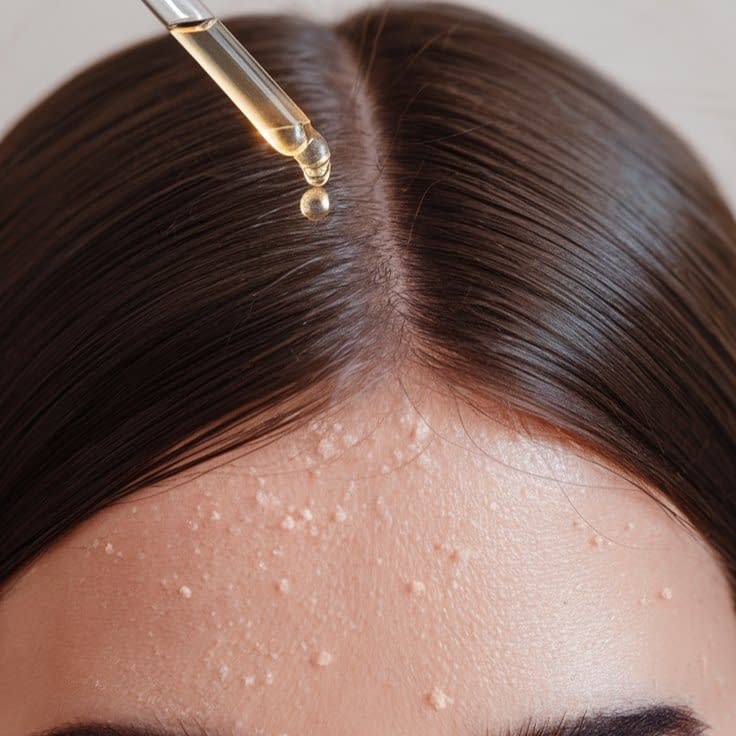
Adopt a daily and weekly routine that reduces triggers and keeps your scalp balanced.
Daily / every-wash basics
- Choose the right cleanser for your scalp type (anti-dandruff medicated shampoo 2–3×/week + gentle cleanser other days).
- Wash with lukewarm water — hot water strips oils and worsens dryness.
- Gentle massaging while shampooing improves circulation and lifts flakes — use fingertips, not nails.
- Rinse thoroughly — leftover product can irritate scalp.
- Condition hair ends only (avoid heavy conditioners on the scalp unless the product is scalp-friendly).
- Dry gently; pat with a towel and avoid vigorous rubbing.
Weekly
- Use an exfoliating scalp treatment or medicated mask 1× per week if you have buildup.
- Rotate medicated shampoos if one loses effectiveness after long-term use (e.g., alternate ketoconazole and zinc pyrithione).
Lifestyle habits
- Brush hair daily to distribute oils from scalp down the hair shaft (use a clean brush).
- Keep hair tools and pillowcases clean — they collect oils and flakes.
- Avoid tight hairstyles that trap sweat and oil against scalp for long periods.
When showering after exercise
- Rinse or shampoo after heavy sweating to prevent buildup and itching.
Foods That Help Reduce Dandruff from Within
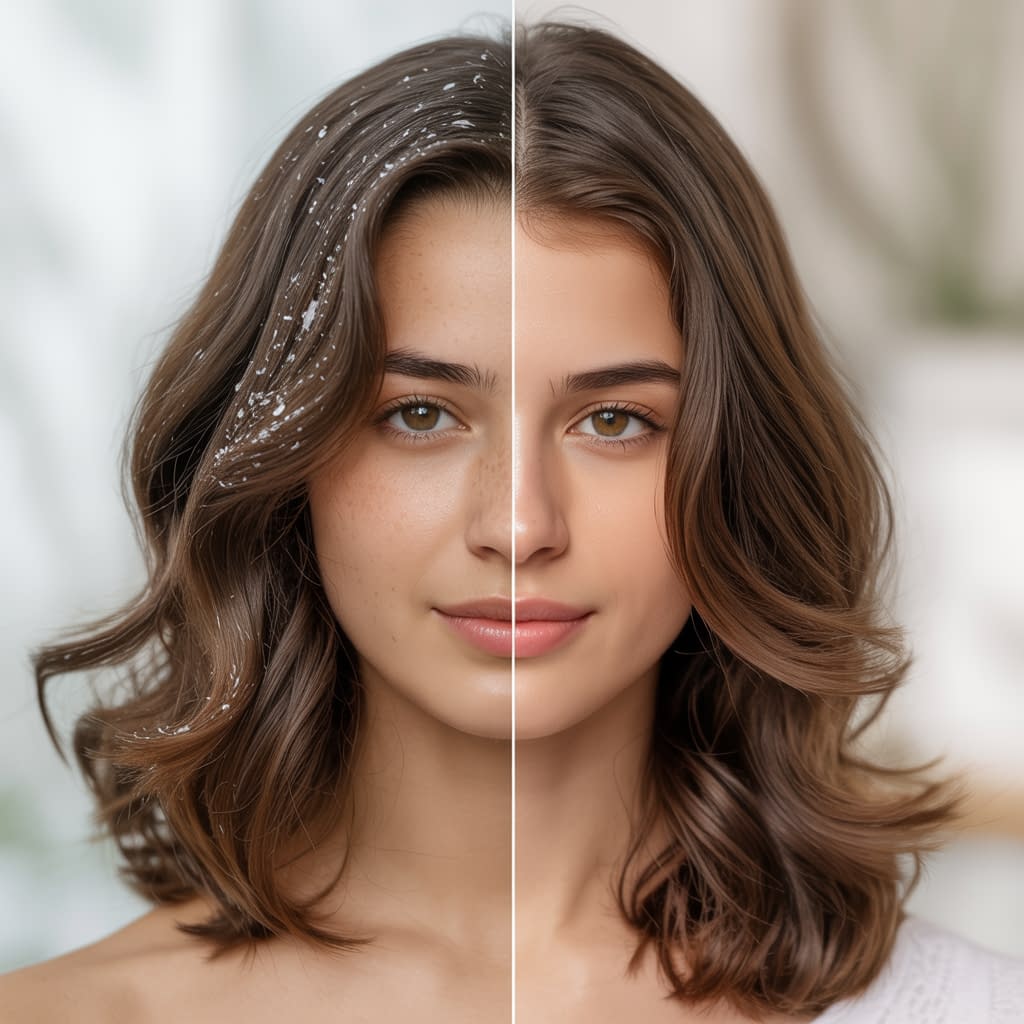
Scalp health connects to diet. While diet won’t cure severe dandruff alone, these nutrients support scalp balance:
- Omega-3 fatty acids (fatty fish, flaxseed, chia, walnuts) — reduce inflammation and support skin hydration.
- Zinc-rich foods (pumpkin seeds, beef, lentils) — zinc plays a role in skin repair and immune response.
- B vitamins (especially biotin, B2, B6) — eggs, whole grains, legumes support hair and scalp health.
- Probiotics (yogurt, kefir, fermented foods) — emerging evidence suggests gut health influences skin inflammation.
- Antioxidants (berries, leafy greens, nuts) — help control oxidative stress that can aggravate skin conditions.
- Stay hydrated — water supports overall skin function and resilience.
If you suspect nutritional deficiency, see a healthcare provider for testing before starting supplements.
Hair Care Mistakes That Make Dandruff Worse
Stop these common habits:
- Overwashing OR underwashing — both can worsen flakes. Find a balance (usually every other day or every 2–3 days depending on oiliness).
- Using harsh, stripping shampoos — they remove the protective oils and cause rebound oiliness and flaking.
- Rubbing and scratching — this spreads flakes, irritates skin, and can cause infection.
- Applying heavy conditioners on the scalp — leads to oil buildup and yeast overgrowth.
- Using too many styling products (heavy waxes, sprays) without thorough cleansing — buildup feeds microbes and clogs follicles.
- Sleeping with wet hair — creates a warm, damp environment that can encourage microbial growth.
- Ignoring sunscreen on the scalp if you have thinning hair — sunburned scalps can flake and confuse the issue.
Fixing these often improves dandruff significantly without special products.
When to See a Dermatologist for Dandruff
Seek professional help if:
- Dandruff is severe, persists after 4–6 weeks of appropriate OTC treatment, or is rapidly worsening.
- You have intense itching, pain, bleeding, or oozing lesions.
- Large, thick, silvery plaques suggest psoriasis rather than simple dandruff.
- You’re losing hair in clumps or experiencing noticeable thinning in areas of flaking.
- Over-the-counter meds cause severe irritation or allergic reaction.
What to expect from the dermatologist:
- Accurate diagnosis (differentiating seborrheic dermatitis, psoriasis, eczema, fungal infections).
- Prescription-strength shampoos/solutions (higher-strength antifungals or topical steroids), medicated foams, or systemic therapy for severe cases.
- Advice on long-term management and trigger identification.
Don’t wait if dandruff severely affects your sleep, work, or confidence — it’s manageable with the right treatment.
Best Tips to Prevent Dandruff from Coming Back
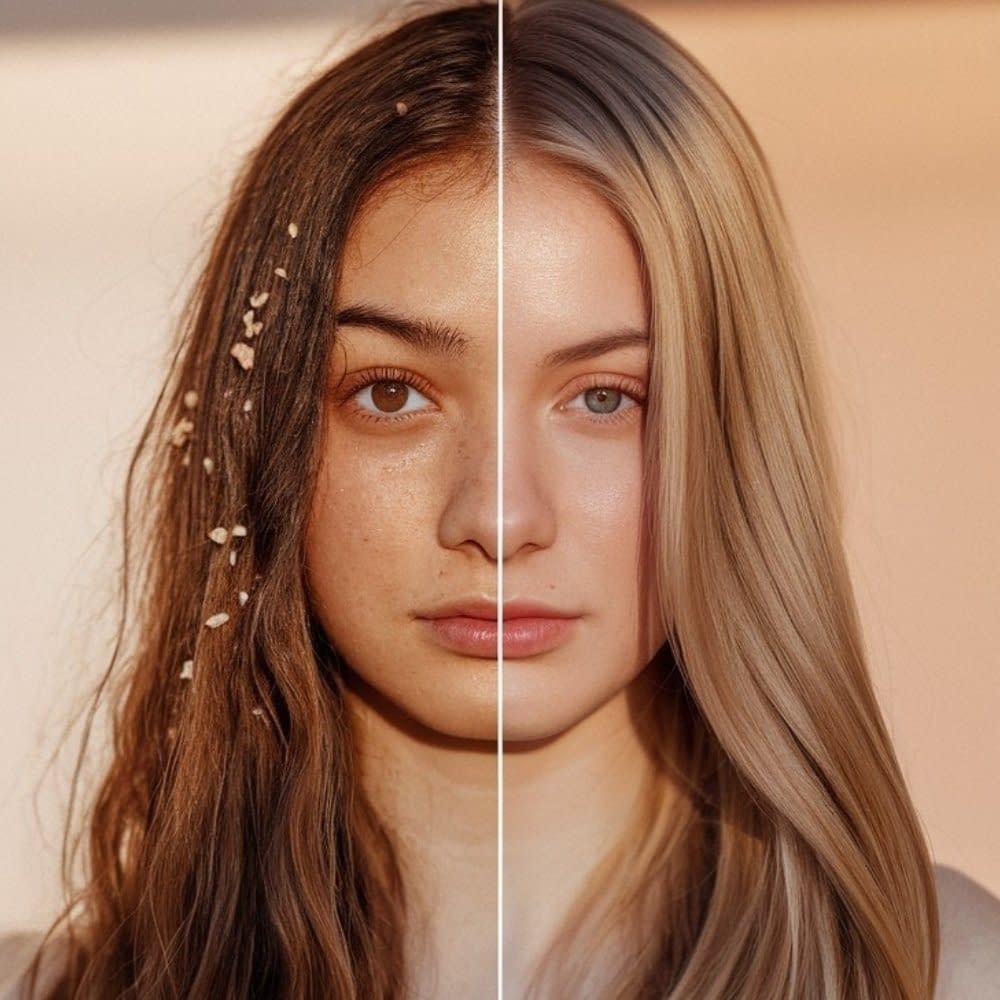
Make these habits permanent:
- Rotate treatment shampoos if needed to prevent resistance; many people alternate medicated and gentle shampoos.
- Maintain a consistent washing rhythm suited to your scalp type.
- Keep stress under control with sleep, exercise, and mindfulness — stress flares many skin conditions.
- Limit heavy products near the scalp and wash brushes/combs regularly.
- Use scalp-friendly products and patch-test perfumes/fragrances.
- Protect your scalp in extreme weather — a hat in winter to reduce drying, breathable cover in sun.
- Follow up with a dermatologist if you had severe flare-ups — they may recommend a long-term maintenance plan.
Final Thoughts: Consistency Is the Key to a Healthy Scalp
Dandruff is common, treatable, and often preventable. The fastest improvements come from combining a targeted medicated shampoo, gentle scalp care (no hot water, no scratching), and healthy lifestyle habits. Home remedies and Ayurvedic practices are helpful adjuncts for many people, but persistent or severe cases need professional assessment. Be patient — scalp cycles are slower than skin cycles, and meaningful improvement usually appears over weeks rather than days.
Frequently Asked Questions About Dandruff
Q: How long until I see improvement?
A: Mild dandruff may improve in 1–2 weeks with proper medicated shampooing; stubborn cases often take 4–6 weeks.
Q: Can dandruff be cured forever?
A: Many people control it long-term with periodic medicated treatments and good scalp care, but it can recur — especially with stress or seasonal changes.
Q: Is dandruff contagious?
A: No. Dandruff results from individual scalp conditions, not contagious pathogens to others.
Q: Can I use coconut oil every day?
A: Not recommended daily for oily scalps — use coconut oil 1× weekly for dry scalps, and always shampoo thoroughly afterward.
Q: Can diet alone fix dandruff?
A: Diet helps but usually isn’t enough alone for moderate-to-severe dandruff. Combine dietary changes with topical treatment for best results.
Q: Are natural remedies safe for everyone?
A: Most are safe when diluted and patch-tested, but people with sensitive or broken skin should be cautious. Never ingest essential oils and avoid strong acids on broken skin.
Q: How should I care for colored or chemically treated hair with dandruff?
A: Use color-safe medicated shampoos and consult your colorist/dermatologist for compatible regimens. Some medicated ingredients (like coal tar) may affect color; test first.



